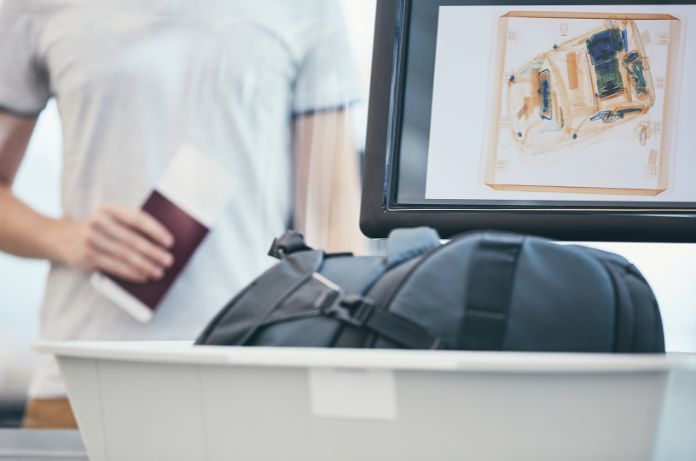When flying with Alaska Airlines, it’s essential to be aware of the airline’s baggage policies, particularly when it comes to oversized bags. Alaska Airlines is known for its affordable services, but baggage fees—especially for larger items—can quickly add up. In this article, we’ll walk you through everything you need to know about Alaska Airlines oversized bag fee, including how to avoid these charges, the rules regarding bag size, and tips for managing your luggage.
What is the Alaska Airlines Oversized Bag Fee?
The oversized bag fee is a charge that applies to luggage that exceeds the standard size limits set by Alaska Airlines. These fees are in addition to the regular checked baggage charges and apply when your bag exceeds the maximum dimensions allowed by the airline.
Alaska Airlines defines an oversized bag as any piece of luggage that measures over 62 inches in total length, width, and height. For example, if your bag measures 25 inches in height, 20 inches in width, and 18 inches in depth, its total size would be 63 inches, making it subject to the oversized bag fee.
Alaska Airlines Oversized Bag Size Limits
Before we dive into the costs, it’s important to know what qualifies as an oversized bag. Alaska Airlines has specific guidelines for both standard and oversized baggage:
- Standard Baggage: Bags must not exceed 62 inches in combined dimensions (length + width + height) and 50 lbs in weight.
- Oversized Bags: Bags exceeding 62 inches but no more than 80 inches in combined dimensions fall under the oversized bag category. These items will incur a surcharge in addition to the regular checked bag fee.
- Overweight Bags: If your bag exceeds the 50 lbs weight limit, it will be considered overweight and subject to an additional fee, even if it’s within the size limits.
If your bag exceeds 80 inches in total dimensions, it will be considered “excessively large,” and you may need to ship it separately via freight, which could be significantly more expensive.
Alaska Airlines Oversized Bag Fee Breakdown
Alaska Airlines’ oversized bag fees are based on the size of the bag and its final dimensions:
-
Bags measuring 63-80 inches: Alaska Airlines charges a fee for oversized bags, which typically ranges from $100 to $150 per bag, depending on the route and specific circumstances. The exact fee may vary, so checking Alaska Airlines’ official website or contacting customer service before your flight is a good idea to avoid surprises.
-
Excessively Large Items: If your bag exceeds 80 inches, you will need to arrange for shipping the item as freight. Freight charges can be significantly higher, and Alaska Airlines offers different guidelines for handling oversized cargo. This may involve coordinating with a third-party freight carrier to transport your large items.
How to Avoid Alaska Airlines Oversized Bag Fee?
The best way to avoid paying an oversized bag fee with Alaska Airlines is to plan ahead and pack efficiently. Here are a few tips to help you avoid the hefty surcharge:
-
Measure Your Luggage: Before packing, measure the dimensions of your luggage to ensure it falls within the standard size limits. Avoid packing excessively large items in regular suitcases.
-
Use a Smaller Bag: Opt for smaller luggage that meets Alaska Airlines’ standard baggage requirements. This will not only help you avoid oversized bag fees but also save you from any potential overweight charges.
-
Consider Shipping Larger Items: If you’re traveling with large sports equipment, such as skis or surfboards, Alaska Airlines provides special handling for these items, but they might still fall under the oversized baggage category. You can explore shipping these items separately or using a dedicated sports equipment bag.
-
Use the Alaska Airlines Baggage Calculator: Alaska Airlines offers an online baggage calculator, which helps you determine the size and weight of your luggage. This can be a great tool to check if your items meet the standard baggage requirements before you even leave home.
Tips for Managing Your Luggage and Avoiding Fees
In addition to measuring and packing carefully, here are a few more helpful tips to keep in mind:
-
Check Your Allowance: If you’re traveling with a partner or family, make sure to distribute the luggage between multiple bags to stay within the allowable size and weight limits. This will help you avoid paying multiple oversized bag fees.
-
Look for Promotions: Sometimes Alaska Airlines runs promotions or offers deals that waive certain baggage fees. It’s worth checking out any special offers, especially if you’re traveling during a holiday season or busy travel periods.
-
Prepay Your Baggage Fees: Many airlines, including Alaska Airlines, allow you to prepay for checked luggage. This can save you time at the airport and help you budget for your trip by paying fees upfront.
How Much Does it Cost for Oversized Bags on Alaska Airlines?
As mentioned, Alaska Airlines charges a separate fee for oversized bags, which can range from $100 to $150 depending on the total dimensions of your bag. In some cases, additional fees may apply for excessively large or heavy items.
To avoid unpleasant surprises at the airport, always double-check your luggage’s dimensions and weight before you leave. You can find detailed information about Alaska Airlines’ baggage policies, including the oversized bag fees, on their website.
Conclusion
The Alaska Airlines oversized bag fee is something every traveler should be aware of before heading to the airport. By ensuring your bags are within the standard size limits, using the right luggage, and taking advantage of any promotions, you can save on extra charges and ensure a smoother journey. Remember to measure your bags, plan ahead, and always check the baggage policies for any updates.
Next time you travel with Alaska Airlines, you’ll be equipped with the knowledge to avoid oversized bag fees and make the most of your baggage allowance. Safe travels!


